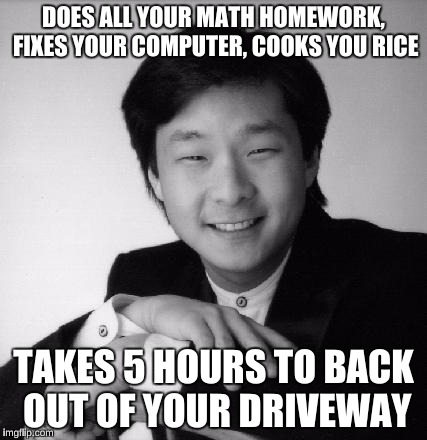This isn't about math but it is typical of the explanations given for complicated subjects:
This is a question submitted on Quora.com
How can a uniform electric field give zig zag motion to the electron in the wire (see comment for description)?
This is my answer and the first one submitted:
A copper atom has 29 electrons. Most of them are going to stay with their nucleus, but they are all whirling around in their various orbitals. With billions of atoms in a wire the electrons being moved by the electric field are going to encounter the relatively stationary electrons and get bounced around somewhat and not just move in straight lines from negative to positive terminal.
============== Here are the kinds of answers given ===============
Jeff Verive, Engineer and Electronics hobbyist (1970-present)
Answered Aug 29
In any non-superconducting conductor with a potential difference across its end points, the mobile conduction band electrons move towards the more positive potential (though conventional current flows in the opposite direction). These electrons are not just affected by the potential difference across the wire, but also by all of the charged particles in the conductor. These other charged particles are also in motion - some more so than others - so the resultant effect is for conduction band electrons to have some amount of random (or “zig-zag”) motion in addition to their motion from one end of the conductor to another. The average distance traveled by each of these electrons is greater than the physical conductor length.
=========================================================
Mark Barton, PhD in Physics, The University of Queensland, physicist with National Astronomical Observatory of Japan
Answered Aug 30
As you gather, the job of the battery to create (and defend) a potential difference between the terminals, at least on the public side. (On the inside there’s a lot of messy chemistry that we physicists like to leave to the chemists.)
But the whole point of a potential difference is that along any path between the two points, you see the same net amount of electric field, in the precise sense that the integral of the dot product of vectors representing small displacements along the path and the vector representing the electric field cone out to the potential difference. Equivalently, if you integrate the mechanical work done on a small test charge, you get the same value (the PD times the charge) regardless of the path.
The electric field can have a very complicated pattern in the space between the terminals and you’re under no obligation to attempt make any path follow the field at any point, and yet the integral of the field between the terminals is still the same. Of course if there’s no movable charge in some or all of the space between the terminals then any paths through that area are not very interesting, but there’s still typically an electric field and principle you could move a test charge through it.
It’s when there’s a wire that things get interesting. If you put the wire in the space but don’t actually connect it to the terminals, charge moves around in the wire to cancel the electric field within the wire. That means there has to be a large electric field in the gaps between the terminals and the ends of the wire. And if you do connect the wire to the terminals then it tries to reduce the PD between the terminals and forces the battery to defend it by moving fresh charge onto the terminals. If the wire is very conductive, the battery will probably lose, and the PD will fall, but if the wire is resistive, the wire will lose and fail to reduce the PD between its ends to zero because of Ohm’s law.
==================================
I have been involved with electronics for decades and worked for IBM. The last two answers are usual and make things more difficult to understand. I have played dumb with White guys to see what kind of BS they would tell me. I found it amusing when I was young.
I have told people that White men confuse their egos with their intellects.
Black Americans should have been letting each other know what the good books are for decades, but if anything Black Americans are more stingy with knowledge than palefaces. With the right books, who needs schools?
Accounting Theory and Practice (1917) by Roy Kester
Accounting Theory and Practice : Roy Bernard Kester : Free Download & Streaming : Internet Archive
Calculus Made Easy, (1914) by Silvanus Thompson
http://www.gutenberg.org/files/33283/33283-pdf.pdf
Teach Yourself Electricity and Electronics (2006) by Stan Gibilisco
teach yourself electricity and electronics
EveryCircuit by Igor Vytyaz
EveryCircuit - Android Apps on Google Play
psik
